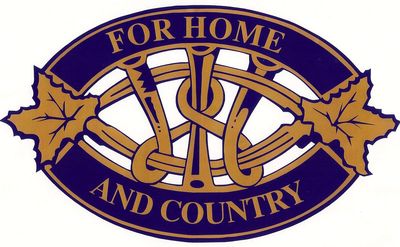
Home & Country Newsletters (Stoney Creek, ON), December, January, February 1991, p. 4
The following text may have been generated by Optical Character Recognition, with varying degrees of accuracy. Reader beware!
Notes from Nebraska B y Margaret M rmro In 1989. the Nebraska Council of Home Extension Clubs (NCIâ€"IEC) initiated an exchange trip between Nebraska and Ontario. In July of 1989. Harriet Steenson. a member ofNCI-IEC visited six Women‘s In- stitute Areas in Ontario - Ottawa (Easteml. Kingston. Guelph. Lon- don, Hamilton and Northern. Har» riet met with as many members as possible and visited various places of interest accompanied by WI members. Driving her to all these places also gave me the opportunity to meet and talk with you in small groups. hear about your acitivities ï¬rst hand. and participate in your events. We were also able to attend the Middlesex County rally. Again. I would like to thank all members who made this possible. to those who were such gracious hosts and to everyone who made a special effort to meet with Harriet and myself. You were great ambas- sadors - both for the organization and the province. It was a privilege for me to make a return visit for three weeks in 1990. I would like to thank all of you for giving me the opportunity. The general idea was for me to see as much of Nebraska and meet with as many NCI-IEC' members as pos- sible. In three weeks I travelled from the southeast to the northwest corner and back. 1 was hosted by nine families and I attended the NCHEC State Convention in Columbus. To visit a country as a tourist is like looking through a window into their lives. But living with people and sharing in their daily lives gives it another dimension. Just as you willingly opened up your homes to Harriet, NCHEC members did the same for me. I arrived as a guest in another country; we speak the same language and are alike in many cusa toms, practices and manners. Our differences make our countries uniâ€" que and our similarities unite us. Also. as members of our respective organizations â€" the FWIO and the NCHEC » we arejoined by common concerns. as well as our memberâ€" ship in the Associated Country Women of the World. My ï¬rst view of Nebraska was from the air as I landed in Omaha. From this vantage point I noticed unusual green circles and many curved contours on the land â€" the result of pivot irrigation and terâ€" raced hills. I had an exceptionally warrn greeting by the weather (95 degrees Fahr.) and by Margie Ries- chick. State President of NCHEC. and her husband who drove me to Pawnee City. The tour commenced in the southeast where I stayed on two difâ€" ferent farms â€" a sheep farm operated by Carol and Willard Thiemann near Pawnee City and a dairy farm operated by Jean and Jim Slander- ford near Humboldt. In Pawnee City, Carol and 1 attended the Pawnee Panorama Days. It was a two-day event organized to attract tourists. It included a tour ofhistori- cal grounds containing many preserved buildings and articles from bygone eras. With the Standerford's, I attended the Local and State Agricultural Society meeting. And as a former member of an agricultural society in my own area, 1 was invited to speak. The weather was very hot during my visit, ranging from 80 to 120 degrees Fahr.. As we drove through the countryside. it was sad to see so many abandoned farms - buildings and houses just left to deteriorate. As we wandered the unmarked backroads. the bench terraces were a common site on the hills. They werelikegiantstepszthey were used to stop soil erosion and maximize the use of water. I attended the NCHEC State Con- vention in Columbus with Marg Rieschick, where I met up with Harâ€" riet Steenson. From here. Han'iet and I paid a visit to Omaha and stayed with herdaughterand son-in- law. In Omaha we toured the original Boys‘ Town. We left Omaha for Wolbach via Stromhcrg where we enjoyed a Swedish Fer: tival. We also visited Grand Island and the Sthur Museum where a civil war re-enactment was on our agen. da. At a meeting in Elba. an interest- ing and almost forgotten fan emerged - Elba was formerly called Canada Hill. In the 18705. fnny settlers emigrated from Ontario and settled there. They were led bv James and Sara McCracken and their family of seven. originallv from Ireland. All that is left of this once thriving community is a well kept graveyard. During these travels the scenery varied from hills to flat country. and from a few trees to no trees. We left Elba. and en route to Halsey through Broken Bow entered the sandhills. There are no trees at all in these hills. It is cattle country. Windmills, the only source of water for cattle, urea part of the scenery, In Halsey. Sue and Doyle Dowsc were my hosts. Doyle worked at the Reforestation Station. and also raised pigs. 1 attended a meeting in a sod house owned by the Dowse family. It is one of only a few surv viving sod homes. ('(mtimral rm put-r l3 Pictured above is Margaret Mmrra standing i'nfmm of a rod curling int/7er ment. In the background is the Dalt‘n‘ Sod House. one of only a few rurt'it'rtlï¬' and homes. 4 H a: C December. January. Februmry I991



























